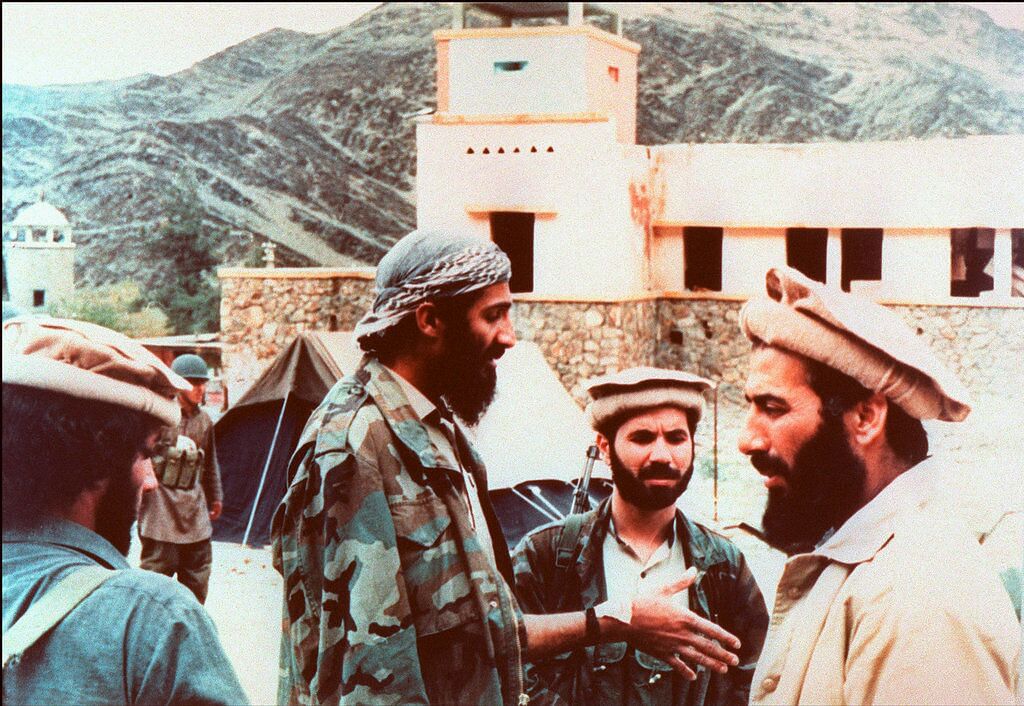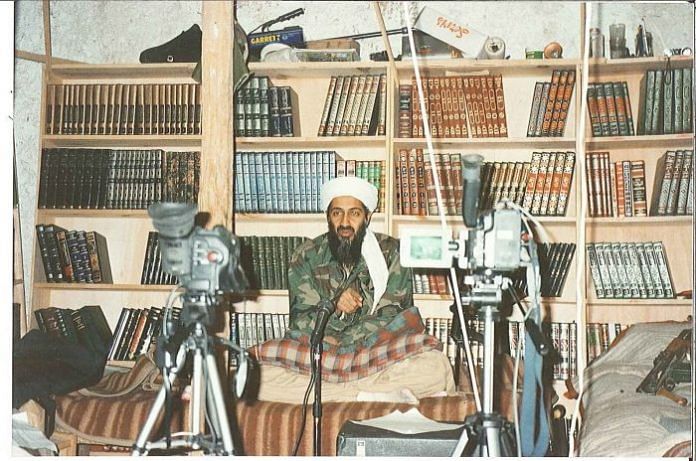In the first of the two-part essay, Adrian Levy and Cathy Scott-Clark, authors of the new book ‘The Exile: The Flight of Osama bin Laden’, list the number of close shaves that the al-Qaeda emir had with the authorities.
ADRIAN LEVY & CATHY SCOTT-CLARK
A deep dive inside al-Qaeda and the family of Osama bin Laden reveals how the world’s most wanted man came within a hair’s breadth of the authorities many times during the nine-and-a-half-years he spent in exile. And the political blunders that ensured his longevity and that of his most crucial allies.
1. 2001 – Iran Afghan border
With $25m on his head, one of those who knew where Osama hid before he settled in Abbottabad was Afghan warlord Gulbuddin Hekmatyar, whose network kept the al-Qaeda emir safe. Hekmatyar was exiled in Iran, where the Revolutionary Guards, held him.
In 2001, Iran had a change of heart and reached out to the U.S. hoping to warm relations, offering up Hekmatyar. But President George W. Bush blindsided his envoys by lumping Tehran in with an ‘Axis of Evil’ in his State of the Union address of January 2002 – rejecting the deal. Instead, Hekmatyar was set free to wreak mayhem along the Af-Pak border while Al Qaeda regrouped inside Iran.
2. 2001 – Kurdistan
Towards the end of that year, a young Jordanian thug and Al Qaeda fighter, Abu Musab al-Zarqawi, was helped by Iran to reach the Iraqi border town of Khurmal where he bedded down with hard-line Kurdish fighters whose territory was part of a U.S. no-fly zone, established after the first Gulf War. In December 2001, Zarqawi was spotted by CIA agents, who cabled the headquarters in Langley, Virginia, requesting a strike. In June 2002, Bush vetoed the plan, enabling Zarqawi to slip into Baghdad and seed sleeper cells that would hound U.S. forces, laying the foundations for Islamic State.
3. January 2002, Karachi
Despite the colossal reward, the world’s most wanted man was not going to miss his conjugal rights. Osama turned up in Karachi, horrifying his network, demanding to spend time with Amal, his Yemeni fourth wife. Amal was being sheltered by Lashkar-e-Taiba, in bustling Malir Town. Osama shifted with her to the upmarket Gulshan-e-Iqbal, living beside universities and corporate offices for multinational companies.
4. Shoe Bombing
9/11 architect Khalid Sheikh Mohammed’s engineers moved to Karachi’s commercial district, where they manufactured explosives for the British show bomber Richard Reid. Before Reid set off on his bungled mission, Osama arrived at the Clifton safe house to wish him good luck. Stunned, Reid and an accomplice flew to England, where the second man spilled the plan to his mother who made him write to his handlers, withdrawing.
“You will have to tell ‘Van Damme’ that he could be on his own,” Badat wrote, referring to Reid’s code name. He then identified the Clifton hideaway, but Osama fled only hours before it was raided.

5. December 2002, Kutkey, Martung Tehsil, Shangla, Pakistan
Osama was taken seriously ill with a chronic kidney condition that caused blackouts. Refusing bed-rest, he was a poor patient, Osama pestered his aides, the al-Kuwaiti brothers, to take him and Amal on a trip to a nearby bazaar in a curtained van. Wanting to get it over, the aide drove too fast running into a rare Pakistan police speed trap. The constable who pulled them over asked to see the driver’s documents, accepting instead a $25 bribe. (0.0001 of the U.S. reward).
6. Geneva talks – U.S thrown off course
Many of al-Qaeda’s religious and military council members were in Iran by spring 2003. As the U.S. prepared to invade Iraq, Tehran offered to hand over their guests to Washington. Secret talks began, fronted by a U.S. Presidential envoy, only for the White House to reject the deal. Vice President Dick Cheney sent a message: ‘Let them rot in hell’.
7. October 2005
Osama, now in Abbottabad, agreed to a secret rendezvous with the founder of Harkat-ul-Mujahideen, Fazlur Rehman Khalil. He and Osama knew each other from fighting the Soviets in Afghanistan, at which time Khalil, a Punjabi, had been a skilled operator with a Stinger missile.
In 1995, mujahideens loyal to Khalil kidnapped six Western backpackers in Kashmir. In 1999, his group was behind the hijacking of an Indian jet and secured the release of Masood Azhar, the Jaish-e-Mohammed emir. Now Khalil chose a supporter’s house on the fringes of the Tribal Areas to meet Osama. He clipped his beard, hoping to disguise his looks, and slipped out of the house in a red saloon car that drove him unguarded to the house several hours away. It too had no security and inside the two men shared a meal of goat and rice as Khalil revealed that former ISI chief, General Hamid Gul, had pledged to be a part of the smokescreen that would protect Osama.
8. Eviction Notice
Osama’s guardians, the al-Kuwaiti brothers, Ibrahim and Abrar, were ground down by 2010. They called a meeting with Osama in December who insensitively revealed he intended to expand the household with five new family members joining him from Iran. Ibrahim, diagnosed with terminal cancer, and Abrar, suffering from chronic depression, resigned. Osama would have to find new staff. And they demanded the Abbottabad house, handing Osama an eviction notice.
The arguments continued, with Osama playing for time, until February 2011, when the al-Qaeda leader won an extension to remain in Abbottabad until September 2011. He reveled in victory over the al-Kuwaitis. But three months later, the U.S. Seal Team 6 arrived.
You can read more about the book ‘The Exile: The Flight of Osama bin Laden’ and the authors here



